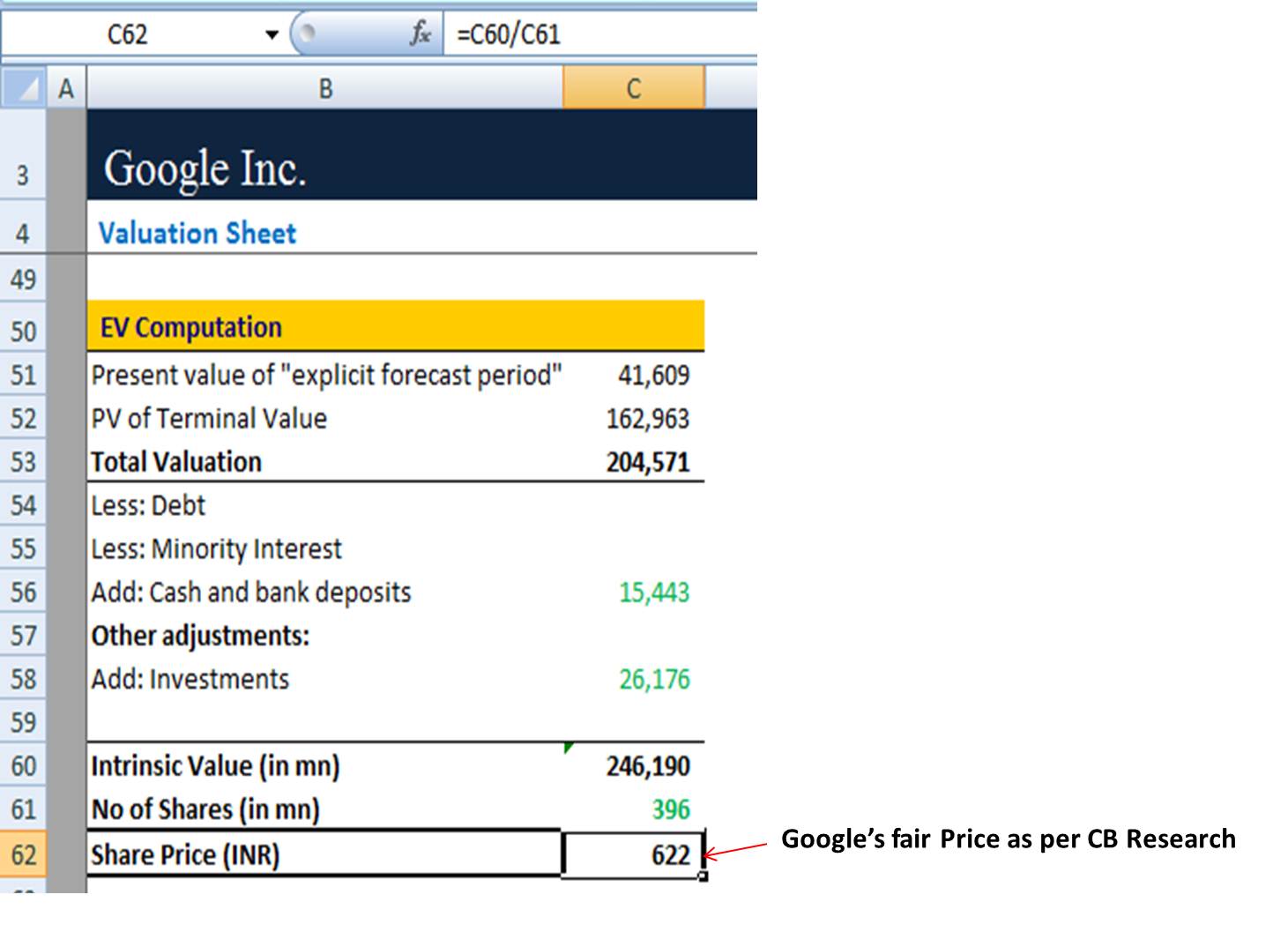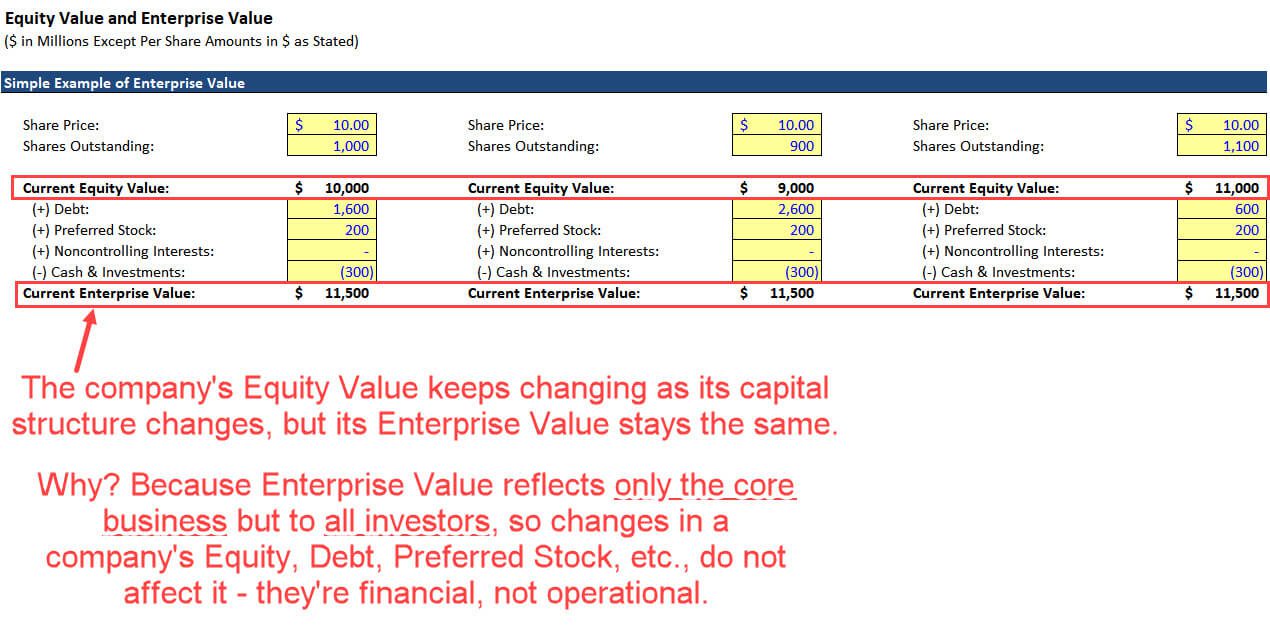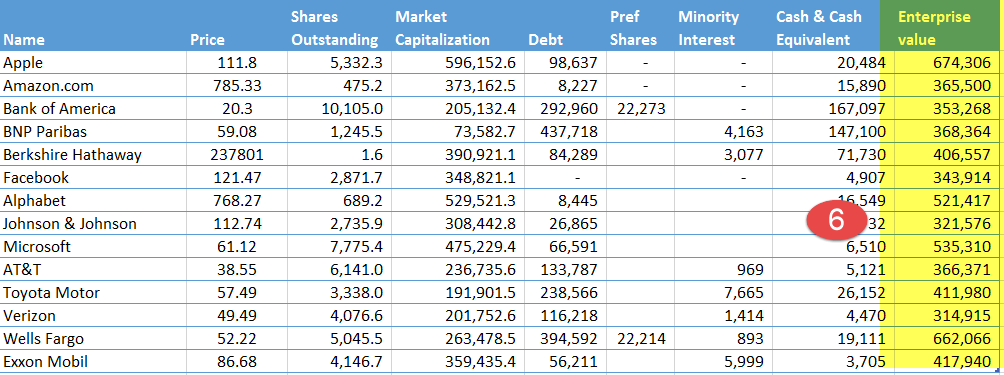


- Convert enterprise value to per share value full#
- Convert enterprise value to per share value series#
Convert enterprise value to per share value series#
Six months after the notes are issued the startup sells $2 million in Series Seed Preferred Stock on a pre-money valuation of $8 million. In all fairness, the investor should have some comfort that if an investment is made when the company has very little value, that the note will not convert at an astronomical valuation and thereby deprive the investor of participating in all the upside that was made possible by the early investment.Ĭap Illustration: Let’s take a situation where a startup sold $100,000 of convertible notes with no discount, interest at 8 percent, and a valuation cap of $5 million that automatically converts upon a qualified financing of at least $1 million. It is intended to ensure that an investor does not miss out on significant appreciation of a company between the time of the sale of convertible notes and the qualified financing. It is not a valuation of the company based on the company’s current projections or assets. How Does a Valuation Cap Work?Ī "valuation cap" entitles note holders to convert the outstanding balance on the note into shares of stock at the lower of (i) the valuation cap or (ii) the price per share in a qualified financing (or, if there is a discount in the note, then the discounted price per share). For example, if a note is sold with a 20 percent discount and the company sells shares of Series A Preferred Stock in a qualified financing for $1 per share, then the outstanding balance on the note at the time of the qualified financing would convert into shares of Series A Preferred Stock at a price of $0.80 per share. What Is a Discount?Ī discount is simply a percentage discount on the per share price of stock sold in a financing. Without a cap or discount, the notes would typically convert into the issuing company’s preferred stock in the qualified financing at the same price as the preferred stock issued in that financing, which would not be an attractive investment to investors because they would not receive any benefit for being an early investor. In order to make a note investment attractive to investors the notes will generally convert at a cap or discount. One of most commonly discussed terms is the valuation cap, but what is a valuation cap?Ĭonvertible notes are designed to convert into stock of the issuing company upon the subsequent sale of preferred stock in excess of a certain dollar threshold, which is usually referred to as a "qualified financing." For example, a qualified financing may be defined as the sale of more than $1 million of preferred stock.

While a simple instrument to sell in comparison to equity, there are still several terms a startup founder needs to consider when selling convertible notes in order to make them attractive to investors.
Convert enterprise value to per share value full#
The P/E ratio does not reveal a full picture, and it is most useful when comparing only companies within the same industry or comparing companies against the general market.The first investor money raised by startups is most frequently raised through the sale of convertible notes.

This metric is widely known and used as an indicator of a company's future growth potential. The P/E ratio is a valuation metric that compares a company’s stock earnings per share (EPS) to its current market price.


 0 kommentar(er)
0 kommentar(er)
